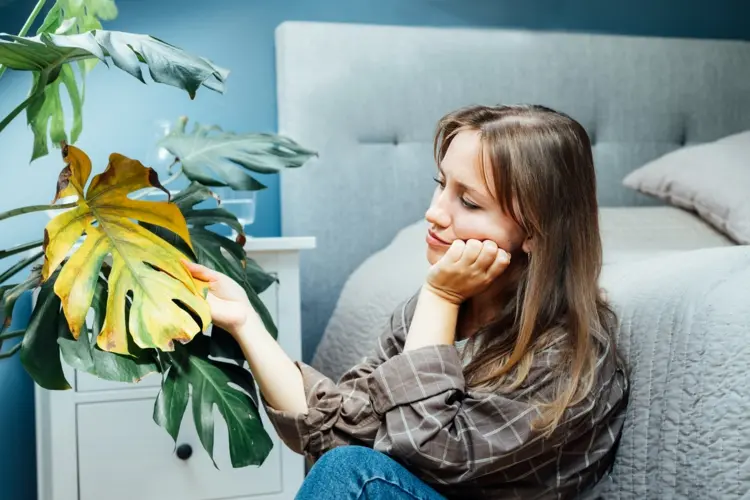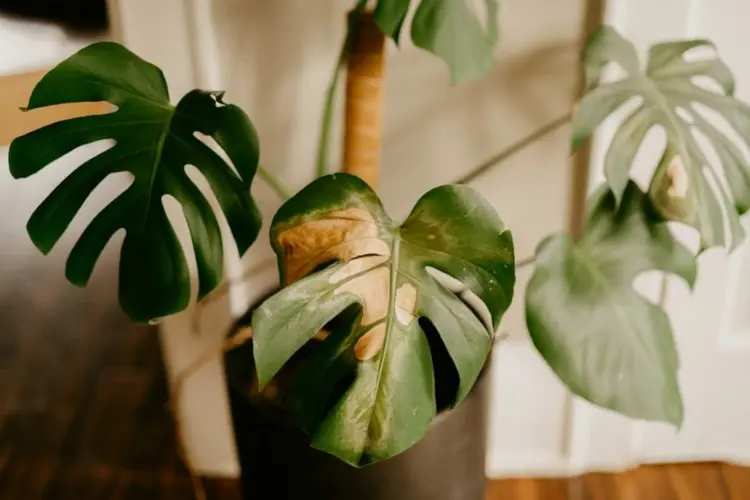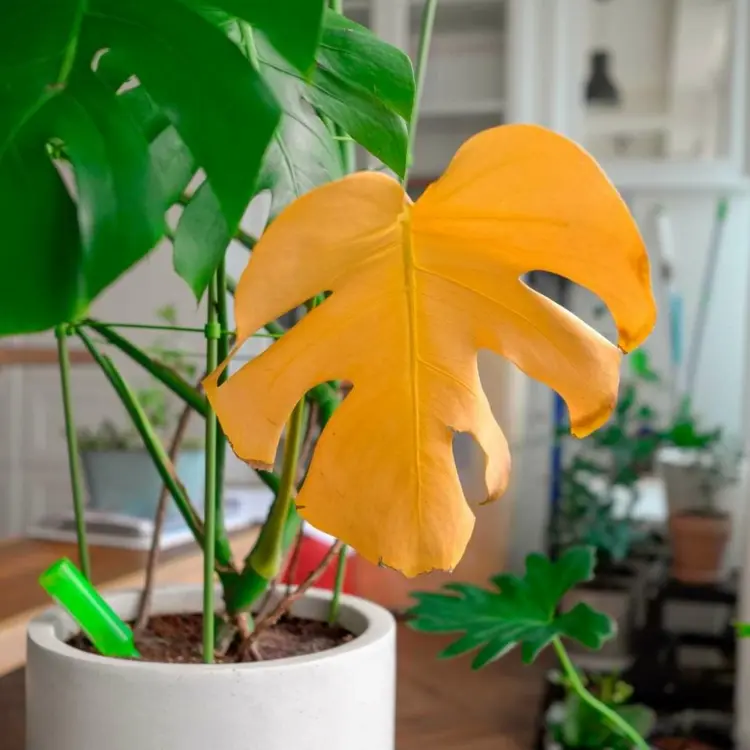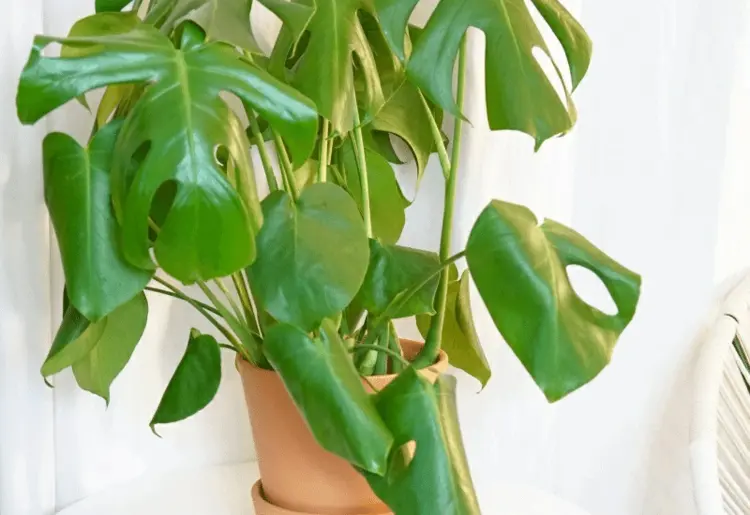This impressive plant with holes in the leaves is one of the most popular indoor plants because it is a real eye-catcher. Of course, you are all the more proud when you are successful with the care and the large Monstera leaves thrive lushly green and large. Of course, it is all the more annoying when problems suddenly arise. It’s always the leaves that are the quickest way to tell that something is wrong with the plant. We have listed some typical Monstera leaf problems for you so that you can act quickly and correctly.
When the plant leaves are dripping
When Monstera leaves are dripping, also known as “sweating” and “weeping,” it’s a sign that the moisture you’ve been giving it is just too much of a good thing. If you keep the soil too moist for too long, the plant will continue to absorb this moisture (after all, it also wants the nutrients that come with it), but the excess will then be excreted through each individual leaf.
In principle, the plant does this all the time, except that it is not always visible to the eye. However, if photosynthesis is not taking place (e.g. at night when there is no light, which is necessary for photosynthesis), the excreted water cannot evaporate as quickly. In combination with a warm earth and cooler air temperature, it then collects in the form of droplets.
So since this phenomenon is actually a sign of overhydration, you should fix the problem as soon as possible. Because apart from root rot, a nutrient deficiency can also occur, which can be recognized by yellow leaves, among other things.
Discolored Monstera leaves

Discoloration and spots are also a quick way to tell that the plant is sick. However, the causes can differ.
Monstera leaves turn brown

Is your monstera getting brown leaves? To find the exact cause, take a closer look at the discoloration, because the brown tone and the gradient and any additional discoloration in other colors can also occur.
eyespot disease
- Eye spot disease causes brown spots with a yellow border in Monstera.
- The mushroom (Spilocaea oleagina) slowly spreads to the whole leaf and then to the rest of the plant and should be treated as soon as possible to save it.
- First, simply cut off sick Monstera leaves (then disinfect the scissors).
- However, if the disease continues to spread and you find brown spots on the Monstera, treat with appropriate remedies (usually copper-based ones).
over-fertilization
- Brown leaf margins are a sign, along with shedding of old leaves as new ones appear.

burns from the sun
- Sunburn is noticeable through light brown spots that appear dry.
- Dry spots on the leaf tips or edges.
- Immediately move the plant to a more shady spot.
- Affected leaves don’t bother the plant, but they’re not pretty to look at.
- Cut off the leaves so that the plant can put more effort into developing new ones.
- Avoid frequent changes.
Monstera leaves turn yellow

Even if the Monstera gets yellow leaves, this can of course have different causes. These include:
- wrong watering
- wrong light conditions
- temperature fluctuations
- problematic repotting
- Nutrient deficiency or excess
- pests
- Diseases (e.g. anthracnose causes brown spots and yellow leaves on the Monstera)
Check out our post on yellow monstera leaves for more detailed information on this.
Black spots on the plant
If the Monstera gets black leaves, which are more precisely expressed in spots, it may well be the so-called leaf spot disease. The spots can also tend to be brown in color. Causes are:
- Overhydration during dormancy
- too humid, stagnant air
- Cold (both in terms of temperature and irrigation water)
You can do this:
- Cut off any diseased leaf.
- Treat with fungicides.
- disinfect tools.
- Proper care from now on.
Monstera has limp leaves

What Can Make Monstera Leaves Look Limp?
lack of moisture
- As with all plants, a lack of moisture causes the leaves to droop because not enough water can get to the tips.
- The plant tries to preserve and save the more important parts of the plant, namely the roots.
- So water more often or more extensively.
root rot
- Wilted leaves, which initially appear to be due to lack of moisture.
- Therefore, before you rush to water, you should be sure that the roots are not affected.
- Waterlogging leads to root rot with the same result as lack of water: moisture can no longer reach the leaves (because the roots are damaged and can no longer absorb it).
- Cut off affected roots.
- Repot the plant in fresh and, above all, dry soil with a drainage layer.
- Stop watering for a few days!
When the plant sheds leaves
… this may be a sign of nutrient deficiency. Usually an old leaf falls off as soon as a new one grows. If your Monstera leaves are showing problems of this kind, the solution is very clear: fertilize!
Monstera leaves curl up

If the monstera has curled leaves, this is not necessarily a sign of a problem. Freshly sprouted plant leaves can also look like a scroll before they fully spread out. However, if you suddenly notice this on a larger hand, it can be a bad sign:
Monstera leaves curl when:
- There is a lack of water, both in terms of watering and humidity.
- there is a pest infestation or a disease (spider mites, powdery mildew and thrips suck the leaf juice).
- heat stress prevails.
- The planter is not optimal.
- you overwater the plant permanently.